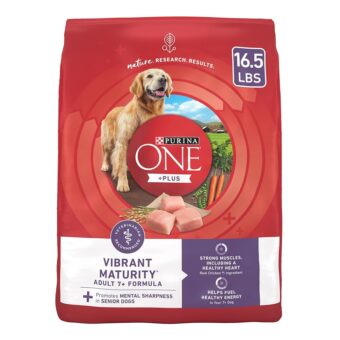
Introduction to Dalmatians
Dalmatians have long captivated the hearts of dog enthusiasts and the general public alike, primarily due to their striking spotted coats and charming disposition. Originating from the historical region of Dalmatia in Croatia, these dogs have a rich lineage that dates back centuries. Originally used as carriage dogs and in various capacities including firehouse mascots, their versatility has allowed them to evolve alongside human society.
The most distinguishing feature of Dalmatians is undoubtedly their unique coat, which is traditionally white with black or liver spots. This distinctive pattern not only adds to their visual appeal but has also become a defining characteristic of the breed. Over time, their extraordinary appearance has garnered significant attention in popular culture, leading to their portrayal in films and literature, most famously in “101 Dalmatians.” Such representations have solidified their status as iconic companions, often celebrated for their attractiveness and charm.
<pbeyond active=”” an=”” and=”” appearance,=”” are=”” challenges=”” character=”” comes=”” companions=”” consistent=”” dalmatians=”” early=”” emphasizing=”” energetic=”” energy=”” exercise=”” families=”” for=”” furthermore,=”” happy=”” healthy.=”” high=”” ideal=”” importance=”” individuals=”” intelligence=”” it=”” known=”” lead=”” levels,=”” lifestyle.=”” makes=”” nature=”” obedience=”” of=”” often=”” p=”” personality.=”” playful=”” present=”” regular=”” remain=”” renowned=”” requiring=”” socialization=”” stimulation=”” strong-willed=”” the=”” their=”” them=”” they=”” this=”” to=”” training,=”” training.<pin activities=”” and=”” appropriate=”” as=”” be=”” both=”” can=”” care=”” cherished=”” companionship.=”” contemporary=”” continue=”” crucial=”” dalmatians=”” deserve.
The History of Dalmatians
The Dalmatian breed boasts a rich historical background that reflects its evolution from working dog to cherished companion. The origins of Dalmatians can be traced back to the region of Dalmatia in Croatia, where they were primarily utilized as carriage dogs. Their exceptional ability to keep pace with horses made them valuable assets, ensuring safe and efficient travel. Dalmatians were often seen running alongside horse-drawn carriages, serving not only as protectors but also as a symbol of status for the nobility of the time.
As society progressed, so did the roles of Dalmatians. In the 19th century, these elegant dogs found a novel position as firehouse mascots. Their affinity for horses and their remarkable stamina made them an ideal companion for firefighters. Dalmatians would accompany horse-drawn fire engines, assisting in the transportation of firemen and equipment to the scene of emergencies. They played a crucial role by clearing the way, keeping other animals at bay, and helping to maintain order amidst the chaos of the fire. This close relationship with the fire service established the breed’s strong association with fire trucks, which persists today.
Dalmatians continued to evolve, eventually becoming household pets as well. Their striking spotted coats and spirited personalities captured the hearts of families around the world. In the late 20th century, the popularity of Dalmatians surged, particularly influenced by their portrayal in movies and media, such as the iconic Disney film “101 Dalmatians.” Today, these dogs are celebrated not only for their historical significance but also for their playful demeanor and loyalty. As a result, the Dalmatian has successfully transitioned from a working dog to a beloved family member, maintaining the charm and character that has captivated people for generations.
Physical Characteristics: The Spotty Coat
Dalmatians are renowned for their unique and striking appearance, primarily characterized by their distinctive spotted coat. This breed’s coat is short, dense, and smooth, allowing the vibrant patterns to stand out prominently. Dalmatians typically exhibit a white base color adorned with black or liver spots, which can vary in size and distribution. While the classic black spots are the most recognized, some Dalmatians may present with brown spots, adding to the breed’s diversity.
One of the most intriguing aspects of the Dalmatian’s coat is its development. Puppies are born completely white and obtain their spots as they mature, usually around three to four weeks of age. This gradual transformation is one of the reasons these dogs are so captivating; their appearance evolves as they grow. The spots can be randomly scattered or appear in a more defined pattern, but what remains constant is their bold contrast against the white fur, which is often associated with elegance and uniqueness among dog breeds.
Grooming a Dalmatian’s coat requires regular attention despite its short length. Weekly brushing helps to remove loose fur and dander, ensuring a cleaner environment and a healthier coat. Additionally, care should be taken to maintain their skin’s health, as Dalmatians are prone to certain skin conditions. Bathing is necessary, but excessive bathing can strip the coat of its natural oils, leading to dryness. Thus, it’s essential to balance grooming practices to preserve the coat’s luster while keeping the dog comfortable.
The distinctive spotted coat of Dalmatians not only underscores their physical beauty but also exemplifies their playful and energetic nature, making them a beloved choice for many. With proper grooming and care, their unique appearance can be maintained, allowing these remarkable dogs to shine in their full glory.
Temperament and Personality Traits
Dalmatians are renowned for their vibrant personality and playful disposition, characteristics that endear them to many as beloved companions. Their friendly nature fosters social interactions with both humans and other animals, making them popular choices for families and individuals alike. These dogs tend to be outgoing and thrive in environments where they can engage with people, showcasing their eagerness to connect. The intelligence of Dalmatians further enhances their appeal; they are quick learners and often excel in obedience training. This intelligence, combined with their affectionate nature, allows them to form strong bonds with their owners.
However, prospective owners should be aware of certain challenges associated with the Dalmatian temperament. One prominent trait is their high energy level. Dalmatians require ample physical activity and mental stimulation to remain healthy and happy. Without proper outlets for their energy, they may develop behavioral issues such as excessive barking, digging, or chewing. Regular exercise, including daily walks, playtime, and engaging activities, is crucial to ensure they are well-adjusted and well-behaved.
Moreover, Dalmatians have a strong need for social interaction, which means they can become anxious or restless when left alone for prolonged periods. This breed thrives on companionship, making it essential for owners to dedicate time to socialize and bond with their pets. While their playful nature is a significant asset, it is essential to provide structure and guidance to channel their exuberance positively.
In conclusion, the delightful temperament of Dalmatians—characterized by playfulness, friendliness, and intelligence—makes them exceptional companions. However, their high energy and need for social interaction require diligent attention from their owners to cultivate a well-balanced and happy pet.
Training and Socialization Needs
Training and socialization are critical components in raising a well-adjusted Dalmatian. These dogs, known for their striking spotted coat and vibrant energy, thrive in environments where they receive consistent training and positive interactions with people and other animals. Establishing a robust training regimen early is essential, as it helps to cultivate good habits and curtail any undesirable behaviors that may develop.
Positive reinforcement techniques are particularly effective for Dalmatians. This approach involves rewarding desired behaviors with praise, treats, or playtime, thereby encouraging them to repeat those actions. Given their intelligent nature, Dalmatians often respond well to rewards, making learning both enjoyable and productive. Training sessions should be kept engaging and should vary in activities to maintain the dog’s interest. Short, frequent sessions are more effective than longer, monotonous ones.
Socialization is equally vital and should begin at an early age. Introducing your Dalmatian to various environments, people, and animals helps them develop a balanced temperament and reduces the likelihood of fear or aggression later in life. Regular exposure to new experiences allows Dalmatians to build confidence and manage their exuberance in different settings. Dog parks, obedience classes, and supervised playdates can significantly enhance a Dalmatian’s social skills.
Additionally, addressing common behavioral issues such as excessive barking or destructive chewing promptly is crucial. Identifying triggers and consistently applying corrective measures, along with positive reinforcement for good behavior, will help mitigate these challenges. As Dalmatians are naturally energetic, ample exercise and playtime can also alleviate some behavioral problems, promoting a healthy and well-behaved pet.
In essence, the focus on training and socialization facilitates a fruitful relationship between a Dalmatian and its owner, establishing the foundation for a harmonious coexistence and a joyful family companion.
Health Considerations for Dalmatians
Dalmatians are renowned for their unique spotted coats and energetic disposition; however, they are also predisposed to certain health issues that potential owners should be aware of. One of the most notable concerns is hereditary deafness, which occurs in a significant percentage of the breed. Research indicates that approximately 30% of Dalmatians may exhibit varying degrees of hearing impairment, making early detection through veterinary screening crucial for effective management. Owners should regularly consult with their veterinarians to ensure comprehensive hearing tests are performed during the early stages of the dog’s life.
Another common health issue in Dalmatians is the formation of urinary stones. The breed has a tendency to develop urate stones, which can lead to serious urinary tract problems if left untreated. It is imperative that Dalmatians maintain proper hydration and a balanced diet tailored to minimize the risk of stone formation. Nutrition rich in high-quality proteins and controlled levels of purines can play a vital role in preventing urinary issues. Regular vet check-ups can help in monitoring their general health and catching any concerns early.
Alongside these specific health issues, regular health care remains essential for the overall well-being of a Dalmatian. Routine vaccinations, parasite control, and dental care should be included in their health regimen. Additionally, Dalmatians require ample exercise to manage their high energy levels. Daily walks and playtime contribute not only to their physical health but also to their mental stimulation and behavioral health.
In conclusion, while Dalmatians are vibrant and spirited companions, it is essential for owners to remain vigilant about the breed’s specific health considerations. Through proactive health care, a nutritious diet, and adequate physical activity, owners can foster a healthy lifestyle for their beloved Dalmatians, ensuring they live a fulfilling and active life.
Grooming and Maintenance
The grooming and maintenance of Dalmatians play a crucial role in promoting the health and appearance of their striking spotted coat. Dalmatians possess a short, dense coat that is relatively low-maintenance compared to long-haired breeds. However, their shedding tendencies require consistent grooming to keep their coat looking its best and to manage the hair around the home.
Brushing is essential for Dalmatians, and it is recommended to brush them at least once a week, or more frequently during shedding seasons. High-quality grooming tools, such as soft bristle brushes or rubber grooming mitts, can aid in removing loose hair and preventing matting. Regular brushing not only helps to control shedding but also distributes natural oils throughout the coat, promoting skin health. Paying attention to especially prone areas, such as behind the ears and under the tail, ensures a thoroughly groomed dog.
Bathing should be done sparingly, approximately every three months, unless the dog has rolled in dirt or has a noticeable odor. Using a gentle, hypoallergenic shampoo is advisable to avoid stripping their skin of essential oils. After bathing, thoroughly dry the coat and pay attention to any moisture trapped in folds or creases to prevent skin irritations.
Maintaining skin health is integral for Dalmatians, especially since their coat is closely linked to their overall wellness. A balanced diet rich in omega fatty acids can aid in sustaining healthy skin and coat. Additionally, regular check-ups with a veterinarian will ensure that any potential skin issues are addressed promptly.
In conclusion, grooming and maintenance of Dalmatians require a regular schedule including brushing, infrequent bathing, and attention to skin health. With proper care, their distinctive coat can remain in excellent condition, allowing them to showcase their cheerful spirit and lively personality.
Activity Level and Exercise Requirements
Dalmatians are known for their high energy and playful disposition, which requires a balanced and regular exercise routine to keep them healthy and well-adjusted. As athletic dogs originally bred for coaching and guarding, they thrive on physical challenges and mental stimulation. It is essential to meet their exercise needs, as insufficient activity can lead to behavioral issues such as hyperactivity, anxiety, and destructive tendencies.
To effectively curb their energy levels, engaging in a combination of daily walks, playtime, and structured activities is vital. A minimum of one hour of vigorous exercise is recommended each day. Activities such as running, hiking, and agility training not only help fulfill their exercise requirements but also provide mental engagement. Dalmatians are intelligent and often enjoy learning new skills, making them excellent candidates for obedience classes or canine sports. Regular interaction and training enhance their bond with owners while keeping them physically fit.
In addition to outdoor activities, incorporating games like fetch, frisbee, or hide and seek can stimulate their minds and promote healthy habits. Furthermore, socialization with other dogs during group play can significantly benefit their emotional well-being, allowing them to exhibit their natural playful nature while developing essential social skills. However, it is crucial to monitor their playtime, as they can sometimes become overly excited.
Failure to provide adequate exercise can lead to weight gain, a decline in overall health, and increased nuisance behaviors. Therefore, it is essential for Dalmatian owners to prioritize consistent physical activity tailored to their dogs’ preferences and energy levels. By ensuring that these vibrant dogs receive the necessary exercise and stimulation, owners can promote a harmonious relationship and contribute to their furry companions’ health and happiness.
Adopting a Dalmatian: What to Consider
Bringing a Dalmatian into your home is a rewarding endeavor that requires careful thought and preparation. These dogs, known for their striking spots and lively disposition, have unique needs and characteristics that potential owners should consider. Before adopting, evaluating your lifestyle is paramount. Dalmatians are energetic and social dogs that thrive in active environments. They require regular exercise and mental stimulation to keep them happy and healthy. Potential owners should consider their ability to commit to daily walks, play sessions, and interactive activities.
Financial commitment is another vital aspect to consider when deciding to adopt a Dalmatian. The cost of dog ownership goes beyond the initial adoption fee or purchase price. Basic expenses include food, grooming, routine veterinary care, and potential training classes. Additionally, unexpected health issues may arise, so it is prudent to set aside a budget for emergencies. Investing in health insurance for your Dalmatian could also be beneficial in managing unforeseen medical expenses.
Family compatibility is an essential factor; Dalmatians are known for being great companions for children but can be exuberant and require supervision during playtime. Assessing your household dynamics, including the ages of children and the presence of other pets, can help determine whether a Dalmatian would be a fitting addition to your family. Addressing these parameters ensures a harmonious relationship between your new dog and your family members.
Understanding reputable breeding practices and adoption options is crucial. Researching local shelters, rescue groups, or recognized breeders can help you find a healthy and well-socialized Dalmatian. Prioritizing reputable sources ensures that your new pet is not only a good fit for your lifestyle but also comes from a background that promotes proper health and temperament. Equipping yourself with this knowledge will lead to a fulfilling experience as a Dalmatian owner.





